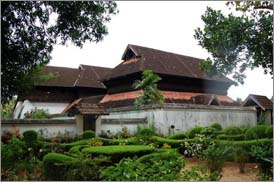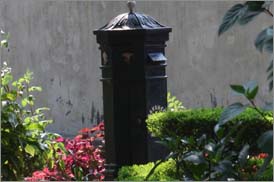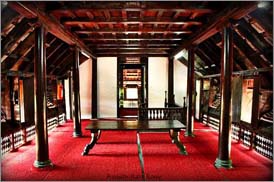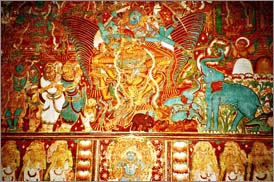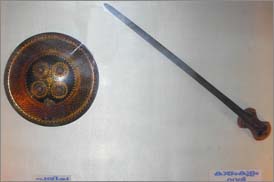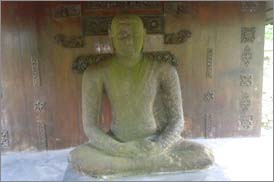- Home
- About Us
- Houseboats
- Resorts
Kochi Resorts Cherai Resorts Guruvayoor Resorts Athirappilly Resorts Munnar Resorts Thekkady Resorts Kottayam Hotels Kumarakom Resorts Aleppey Resorts Varkala Resorts Thiruvananthapuram Resorts Kovalam Resorts Kanyakumari Resorts Madhurai Resorts Banglore Resorts Mysore Resorts Koorg Resorts Ooty Hotels Kodaikanal Hotels
- Packages
- Taxi Service
- Ayurveda

Alappuzha Sightseeings
Alappuzha is blessed with gorgeous places around.Get a glimpse of the beautiful backwater and pilgrim places near.
Aleppey canals
Alappuzha is an important tourist destination in India. The Backwaters of Alappuzha are the most popular tourist attraction in Kerala.A houseboat cruise in these backwaters is a delightful experience.It connects Kumarakom and Cochin towards north and Quilon to the South. Alappuzha is also the access point for the annual Nehru Trophy Boat Race, held on the Punnamada Lake, near Alappuzha, held on the second Saturday of August every year, is the most competitive and popular of the boat races in India
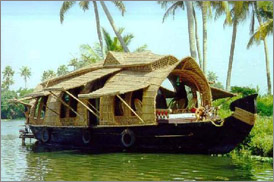
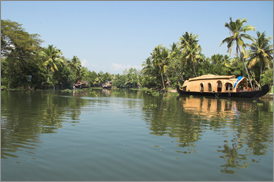
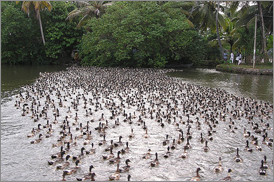
Champakulam church
Champakulam Kalloorkadu St. Mary's Forane Church is one of the oldest Christian churches in India and the mother church of almost all Catholic Syrian churches in Alleppey District. Believed to be established in AD 427. Rebuilt many times and the many rock inscriptions found around the church tell us about the history of the church. The open air Rock Cross at Champakulam church is one of the most ancient ones with clear documentation of its antiquity up to AD 1151. There are many archaeological artifacts found around the church about its history. Champakulam church was once under Niranam Church. Champakulam Church had very friendly relations with the Jacobite Syrian group and had a pivotal role in many ecumenical efforts in the Eighteenth century.
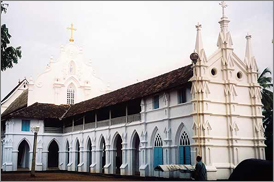
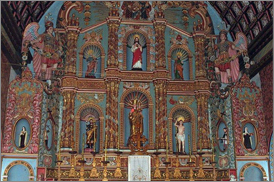
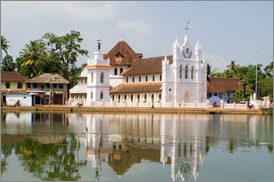
Champakulam boat race
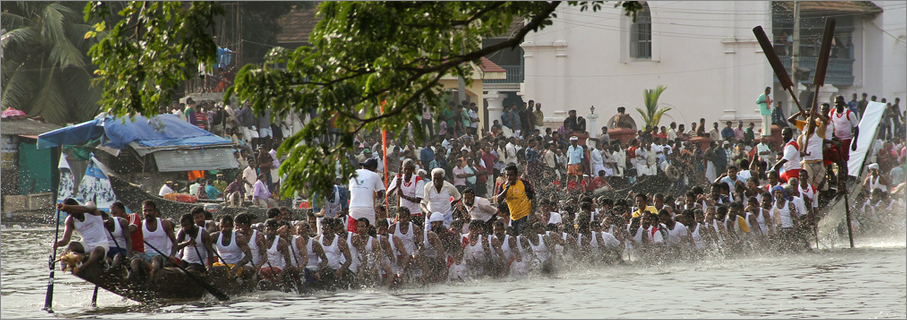
R-block,C-block Paddy fields

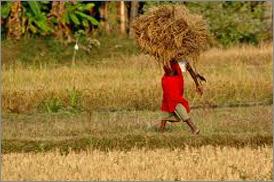
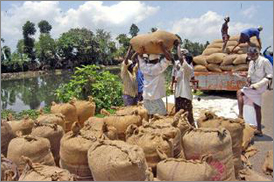
Kayal Raja Muricken
Pallithanam Luca Matthai who had served as member of Moolam Thirunal of Travancore's Praja Sabha was considered as the pioneer of cooperative agricultural movement in Kuttanadu. His life marked the beginning of the epoch of first generation Kayal Raja's of Kuttanad.(Kayal Raja is the term generally used to refer to the prominent kayal cultivators in the Kuttanadu region).In 1931, in order to strengthen the farming community in Kuttanadu he founded Kuttandu Karshaka Sangham(Kuttanadu Agricultural Association). From the beginning of his farming career in his teens (he was only eighteen years when he reclaimed the cherukara kayal), he brought together like minded people and successfully led the reclamation activity from 1898 to 1940.
Due to the steep decline in the price of rice during 1920 to 1940 the reclamation activities become lethargic, but they gained momentum again in the early 1940s. During this period, in order to increase the agricultural output, Government initiated Grow More Food campaiagn and started providing incentives to encourage new reclamations. The advent of electric motors made the reclamations relatively easier, cheaper and less risky as compared to the earlier periods. The last tract of the reclamations namely Q, S and T block were made during this period by Thomman Joseph Murickummoottil (Muricken Outhachan). He did cultivation in a very large extent of reclaimed area and achieved such a success that he was crowned as "Krishi Rajan" (farmer king) by the then prime minister of India, Jawaharlal Nehru.
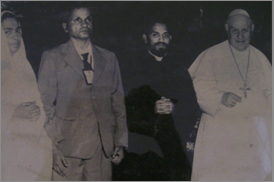
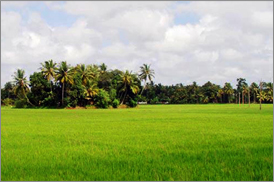
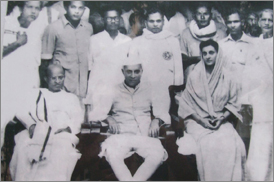
Aleppey Coir making
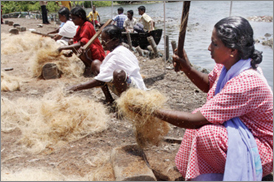


Karumadikuttan
Karumadi Kuttan is a statue of Buddha made from granite.The statue is unique since it is half broken. Legend has it that an elephant charged towards this statue and broke right half of the statue. From the appearance of the statue, the legend does seem to be true. The statue dates back to 10th century. Proper road facility was made to the site after the visit of Sri. Dalai Lahma during 1970. Now the site is sunder the control of Archeological department. Our ancisstors had told us that, there was no building or covering at that time, and this idol was sitting on the open ground nearly 100 years ago.
People and animals used to cross through the karumady river just front of this idol, and one elephant going for Thakazhi temple festival, happend get annoyed and charged at the idol, loosing its left hand portion. Later on the tomb was built and further during 1962 the main bridge connecting Thakazhy and Ambalapuzha came in to being.
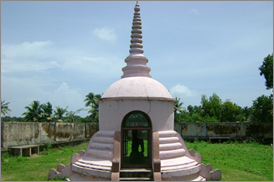
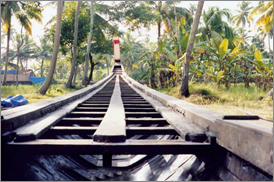
Alappuzha beach
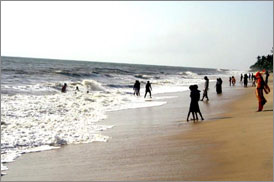
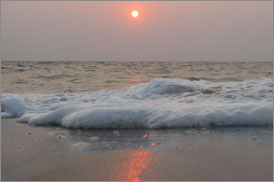
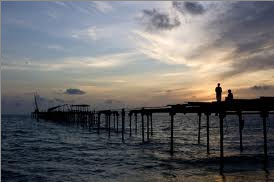
Alappuzha Light house
The Alappuzha Lighthouse is situated in the coastal town of Alappuzha, Kerala. It was built in 1862 and is a major tourist attraction. Visitors are allowed between 1500 hours and 1630 hours on every weekday at an admission fee of ten rupees.The lighthouse, which was paintedlain white, got red and white bands in 2000.
There was no regular lighthouse provided in 18th century-only a light, provided on the pier head.served the mariners. As port activities increased, the authorities had to provide for a lighthouse. The construction of the present lighthouse began in the reign of His Highness Marthanda Varma-II Maharaja (ruler of Travancore) and was completed during the reign of His Highness Rama Varma Maharaja of Travancore. The first stone was installed by Mrs. Mough Crawford on April 26, 1860. The 30' high lighthouse has a teak spiral staircase.
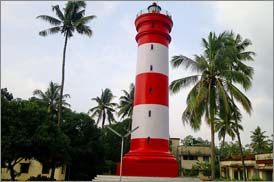
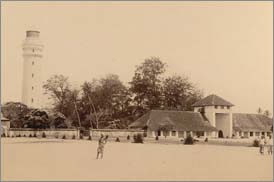
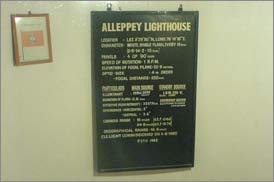
Ambalappuzha Sree Krishnaswamy Temple
The Ambalappuzha Sri Krishna Temple is believed to have been built in the year AD 790 by the local ruler Chembakasserry Pooradam Thirunal-Devanarayanan Thampuran.
The idol at Ambalapuzha is likened to Parthasarthi with a whip in the right hand and a Shankhu (sacred conch) in the left. During the raids of Tipu Sultan in 1789, the idol of Sri Krishna from the Guruvayoor Temple was brought to the Ambalappuzha Temple for safe keeping.
The payasam served in the Ambalappuzha Temple is famous among Hindu devotees. This sweet pudding made of rice and milk has an interesting mythological legend behind it.It is believed that Guruvayoorappan reaches here daily at the time of Palpayasa Nedyam to have it.
The Ambalappuzha temple is 16 km from Alappey KSRTC bus stand.

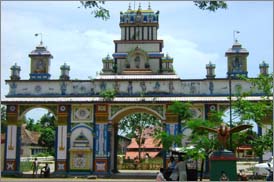
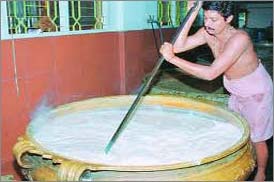
Mannarasala Sree Nagaraja Temple
Mannarasala Sree Nagaraja Temple is a very ancient and internationally-known centre of pilgrimage for the devotees of serpent gods (Nagaraja). The famous Nagaraja temple "Mannarasala" is nestled in a forest glade, like most snake temples. The Mannarasala Temple has over 30,000 images of snakes along the paths and among the trees, and is the largest such temple in Kerala. Women seeking fertility come to worship here, and upon the birth of their child come to hold thanksgiving ceremonies here, often bringing new snake images as offerings.A special turmeric paste which is available at the temple is credited with curative powers.
The temple is located about 32 kilometers from Alappuzha.
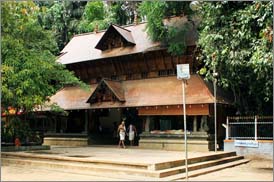
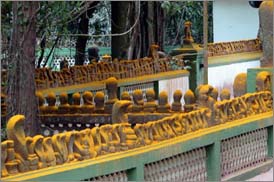
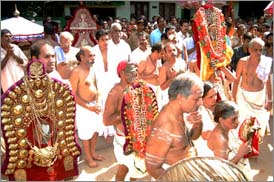
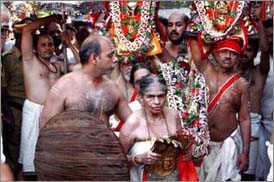
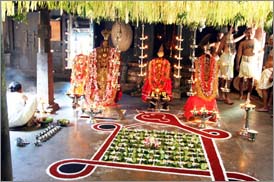
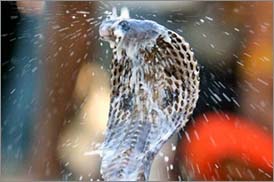
Krishnapuram Palace
TThe Krishnapuram Palace is a palace and museum located in Kayamkulam near Allepey in Alappuzha district, Kerala in southwestern India. It was built in the 18th century by Anizham Thirunal Marthanda Varma (1729–1758 AD), the Travancore kingdom. It is built in the architectural style of Kerala with gabled roof, narrow corridor and dormer windows, near the Krishnaswamy Temple at Krishnapuram.
The palace is maintained by the Archaeological Department of Kerala and contains exhibits that belonged to the Palace and its former occupant, the Travancore Maharaja Marthanda Varma. It is also famous for a large pond within the palace complex. It is also said that an underground escape route runs from the bottom of the pond as a possible escape route from enemies.
Among the many Kerala-style paintings seen in the palace, a distinctly placed mural painting is titled "Gajendra Moksham" of 154 square feet (14.3 m2) size, which is said to be the largest such find in Kerala. It is placed on the western end of the ground floor of the palace.
The double edged Kayamkulam Vaal (sword) is also on display here. The palace houses, in its courtyard, one of the four statues of Buddha found in Alappuzha District.
Krishnapuram palace is 50 km from Alappuzha.
